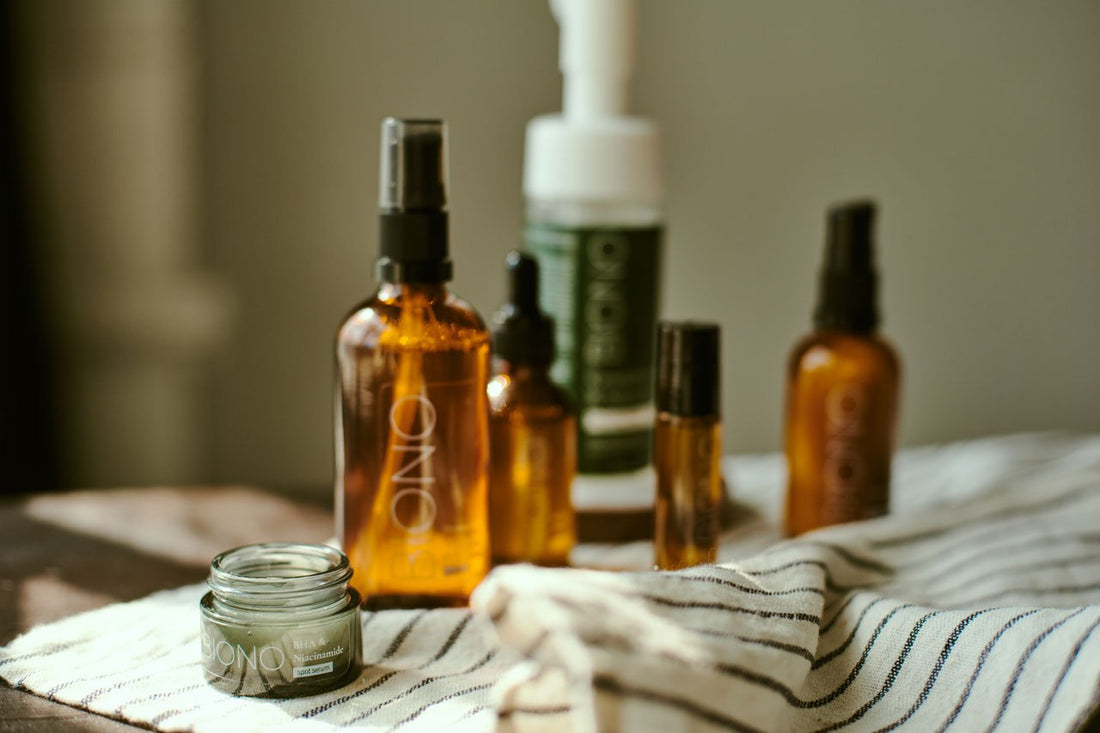
Retinol for acne: how vitamin A helps get rid of acne forever
Acne is not just a cosmetic problem, but a chronic inflammatory skin disease that affects millions of people worldwide. Pimples, blackheads, inflamed acne and post-acne can seriously affect self-esteem and quality of life. Among dozens of products to combat problematic skin, retinol is deservedly considered the gold standard in dermatology. This vitamin A derivative not only eliminates the visible manifestations of acne, but also works with the causes of its occurrence, preventing the appearance of new rashes and smoothing the skin's relief after healing.
Acne and its causes: understanding the problem
Acne is a multifactorial disease of the sebaceous glands and hair follicles, caused by a combination of several factors. The main causes include excessive production of sebum, hyperkeratinization - thickening of the stratum corneum of the skin that clogs pores, overgrowth of the bacteria Cutibacterium acnes, and inflammation. Hormonal fluctuations, especially elevated androgen levels, stimulate the sebaceous glands to produce more sebum, creating the perfect environment for acne to develop.
The problem of acne is not limited to adolescence. Adult women and men also suffer from rashes, especially during times of stress, hormonal changes, poor diet or use of comedogenic cosmetics. Inflammatory elements leave behind post-acne marks - spots, scars, uneven skin texture, which can persist for years without proper treatment. Understanding the mechanisms of acne development helps to choose the most effective means of combating this problem.

What is retinol and how does it work?
Retinol is a form of vitamin A that has been used in cosmetology and dermatology for over 50 years. It is a powerful ingredient that penetrates the deep layers of the skin and normalizes the processes of epidermal renewal at the cellular level. Retinol is converted in the skin to retinoic acid, an active form that binds to cell receptors and triggers a cascade of biochemical reactions.
The mechanism of action of retinoids in acne is multifaceted. First, retinol accelerates the renewal of epidermal cells, which prevents pores from becoming clogged with dead cells. Second, it regulates the work of the sebaceous glands, reducing the production of sebum - a breeding ground for bacteria. Third, retinol has anti-inflammatory properties, reducing redness and swelling around inflamed areas. The fourth important action is the stimulation of collagen synthesis, which helps to even out the skin's texture and reduce the appearance of post-acne.
It’s important to understand the difference between the forms of vitamin A. Retinol is available in over-the-counter cosmetics in concentrations ranging from 0.1% to 1%. The more potent forms—tretinoin, adapalene, tazarotene—are prescription retinoids prescribed by a dermatologist. They are more effective, but they have a higher risk of side effects and require medical supervision.
Retinol for Acne: How Vitamin A Works
Retinol for acne works comprehensively, affecting all links in the development of the disease. Its comedolytic effect - the ability to dissolve comedones (blackheads and whiteheads) and prevent the formation of new ones - makes it indispensable for oily and problematic skin. Retinol literally "cleans" clogged pores, pushing out sebaceous plugs and dead cells.
The anti-inflammatory properties of retinoids are equally important. In acne, inflammation is a key factor that leads to the formation of papules, pustules, nodules, and ultimately scars. Retinol for acne reduces the release of pro-inflammatory mediators, inhibits the activity of enzymes that destroy collagen, and enhances the skin's immune response against bacteria.
Another unique property is its effect on post-acne. After the healing of inflamed elements, red or brown spots (post-inflammatory hyperpigmentation), atrophic scars, and enlarged pores often remain. Retinol stimulates skin renewal, evens out tone, and stimulates the synthesis of new collagen, which gradually smoothes the relief. With prolonged use (6-12 months), even old post-acne become less noticeable.

How to start using retinol for acne
The main mistake when introducing retinoids is the desire for quick results and using high concentrations from day one. Retinol requires an adaptation period, otherwise the skin may react with severe irritation, peeling, redness - the so-called "retinoid reaction". The right start is to gradually introduce the drug.
The starting concentration for beginners should be low — 0.1-0.3% retinoids or 0.5% retinol. For the first two weeks, apply the cream only twice a week, preferably in the evening. If the skin reacts normally, gradually increase the frequency to every other day, and then to daily use. Some people with sensitive skin need a month to adapt.
Application technique matters. Retinol is applied to clean, completely dry skin (wait 20 minutes after cleansing). A pea-sized amount is applied to the entire face. Avoid the area around the eyes, lips, and nose—the skin is most sensitive there. Be sure to use a moisturizer over retinoids to minimize dryness. SPF 30+ sunscreen is critical in the morning, as retinol increases skin photosensitivity.
Combining retinoids with other acne treatments
Acne treatment is most effective with a comprehensive approach. Retinol combines well with many active ingredients, but it is important to know the rules of compatibility. Benzoyl peroxide — a popular antibacterial ingredient — can oxidize retinol, reducing its effectiveness. If your doctor has prescribed both products, use them at different times: benzoyl peroxide in the morning, retinol in the evening.
- Niacinamide (vitamin B3) is an ideal partner for retinoids, reduces irritation, controls sebum
- Hyaluronic acid — compensates for dryness from retinoids, can be used together
- Azelaic acid - enhances the effect against post-acne, but can cause irritation in combination
- Salicylic acid — compatible in low concentrations, helps cleanse pores
What you definitely shouldn't do is combine retinol with other strong acids (AHA, BHA in high concentrations), physical scrubs, aggressive peels in one go. This will lead to serious irritation and disruption of the skin's protective barrier. When using prescription retinoids, always consult a dermatologist about additional care products.
It's important to maintain a simple, straightforward routine: gentle cleansing, retinoid, moisturizer, sunscreen in the morning. Don't overload your skin with dozens of products at once — this won't speed up results, but will only increase the risk of irritation and acne flare-ups.

What to expect: Results timeline
Retinol is not an instant fix, but a long-term investment in your skin's health. Having realistic expectations will help you avoid disappointment and premature discontinuation. The first 2-4 weeks are a period of adjustment, when temporary worsening of the condition is possible. This is a normal process known as "purging", where retinoids accelerate the maturation of hidden comedones.
After 6-8 weeks of regular use, the first noticeable improvements appear: the number of new rashes decreases, the skin becomes smoother, pores narrow, and the tone evens out. It is during this period that it is important not to stop therapy, even if it seems that progress is slow. Retinoids have a cumulative effect.
- The first 2-4 weeks — adaptation, slight peeling and redness are possible
- 4-8 weeks — reduction of new rashes, beginning of skin clearing
- 8-12 weeks — significant improvement, reduction of inflamed elements by 40-60%
- 3-6 months — sustained improvement, minimal new rashes
- 6-12 months — evens out skin tone, reduces post-acne, softens scars
The best results in the treatment of acne are achieved after 3-4 months of daily use of retinoids. For post-acne and scars, an even longer period is needed - from 6 months to a year. Patience and consistency are the key to success. Many people stop using it after 4-6 weeks, not seeing the expected effect, and miss the opportunity to appreciate the true potential of retinol.
Side effects and how to minimize them
Retinoid reaction is the most common side effect of using retinol for acne. It manifests itself in dryness, peeling, redness, a feeling of tightness of the skin, sometimes even a slight burning sensation. This is not an allergy, but the skin's natural response to accelerated cell renewal. The right approach helps to get through this period with minimal discomfort.
The first rule is to not overdo it with the amount of product. More does not mean more effective. A thick layer of retinol will not speed up the result, but only increase irritation. The second is to use a rich moisturizer on top of retinoids. Ingredients like ceramide, squalane, and centella asiatica strengthen the protective barrier and reduce dryness.
If irritation is severe, take a break for 2-3 days, using only a gentle cleanser and intense moisturizer. Then return to retinoids, perhaps less frequently. The "sandwich" technique helps sensitive skin: apply moisturizer, let it absorb, then retinol, then moisturizer again. This slows down penetration but reduces irritation.
Prescription Retinoids: When to See a Dermatologist
Cosmetic retinol is effective for mild to moderate acne, but for severe cases, a prescription medication is needed. A dermatologist may prescribe tretinoin (retinoic acid), adapalene, or tazarotene—more potent forms of retinoids with higher efficacy. They work faster and stronger, but require medical supervision.
Tretinoin is available in various concentrations (0.025%, 0.05%, 0.1%) and forms (cream, gel, microspheres). It is considered the most effective topical agent for acne and post-acne. Adapalene is a third-generation retinoid with high selectivity for certain receptors, which reduces side effects. It is especially effective for comedonal acne.
For severe nodular or cystic acne, a dermatologist may prescribe systemic retinoids—isotretinoin (Roaccutane). This is a powerful oral drug that radically changes the way the sebaceous glands work. It has serious side effects and absolute contraindications (pregnancy), so it should only be taken under strict medical supervision with regular tests.
Mistakes when treating acne with retinoids
The most common mistake is expecting instant results and giving up on treatment because of the lack of quick changes. Retinol for acne takes time, and the first 4-6 weeks can be the most difficult. "Purging" - the release of hidden comedones - is normal, there is no need to panic and throw away the remedy.
The second critical mistake is using retinoids without sunscreen. Retinol makes the skin more sensitive to ultraviolet rays, which can lead to burns, pigmentation, and even increased post-acne. SPF 30+ every day, even in winter and cloudy weather, is not a recommendation, but a prerequisite for successful acne treatment.
The third mistake is combining retinoids with aggressive products without consultation. Scrubs, acid peels, alcohol lotions at the same time as retinol violate the skin's protective barrier, cause inflammation and can even provoke new rashes. Simplicity of care is the key to success. Sometimes less is more, especially when it comes to problem skin.
To summarize: retinoids as a solution to acne
Retinol for acne is not just a trendy ingredient, but a scientifically proven remedy with over half a century of successful use. It works on all levels of acne development: preventing clogged pores, reducing inflammation, controlling sebaceous glands, stimulating skin renewal and smoothing post-acne. For many people, retinoids have become a real salvation after years of unsuccessful attempts to overcome rashes with other methods.
The key to success is a good start, patience, and consistency. Start with low concentrations, give your skin time to adapt, and don't forget about sun protection and hydration. For mild acne, retinol-based products are enough; for moderate to severe acne, consult a dermatologist about prescription medications. Remember: clear, healthy skin is a marathon, not a sprint, and retinoids are your reliable companion on this journey.










